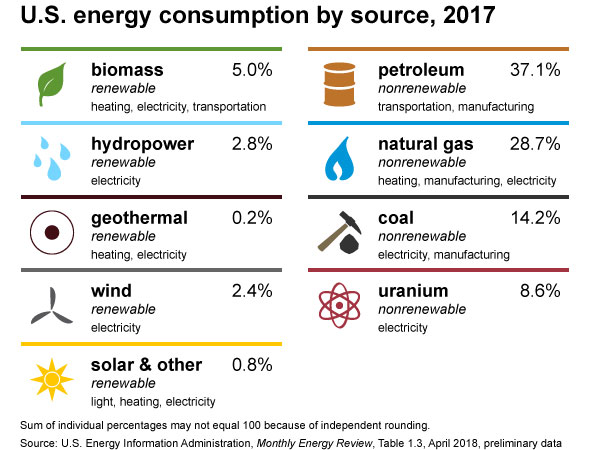We use many different energy sources to do work. Energy sources are classified as renewable or nonrenewable. Renewable and nonrenewable energy can be used as primary energy sources and converted into secondary energy sources such as electricity and hydrogen.
Nonrenewable energy sources
In the United States, nonrenewable energy sources supply most of the energy we use. Nonrenewable energy sources include coal, natural gas, petroleum made from crude oil and natural gas liquids, and uranium. These energy sources are called nonrenewable because their supplies are limited and take a very long time to form. Coal, crude oil, and natural gas formed from the remains of plants buried underground millions of years ago.
Renewable energy sources
Renewable energy sources include biomass, geothermal energy, hydropower, solar energy, and wind energy. They are called renewable because they are naturally replenished in a short period of time. Day after day, the sun shines, the wind blows, and rivers flow.




